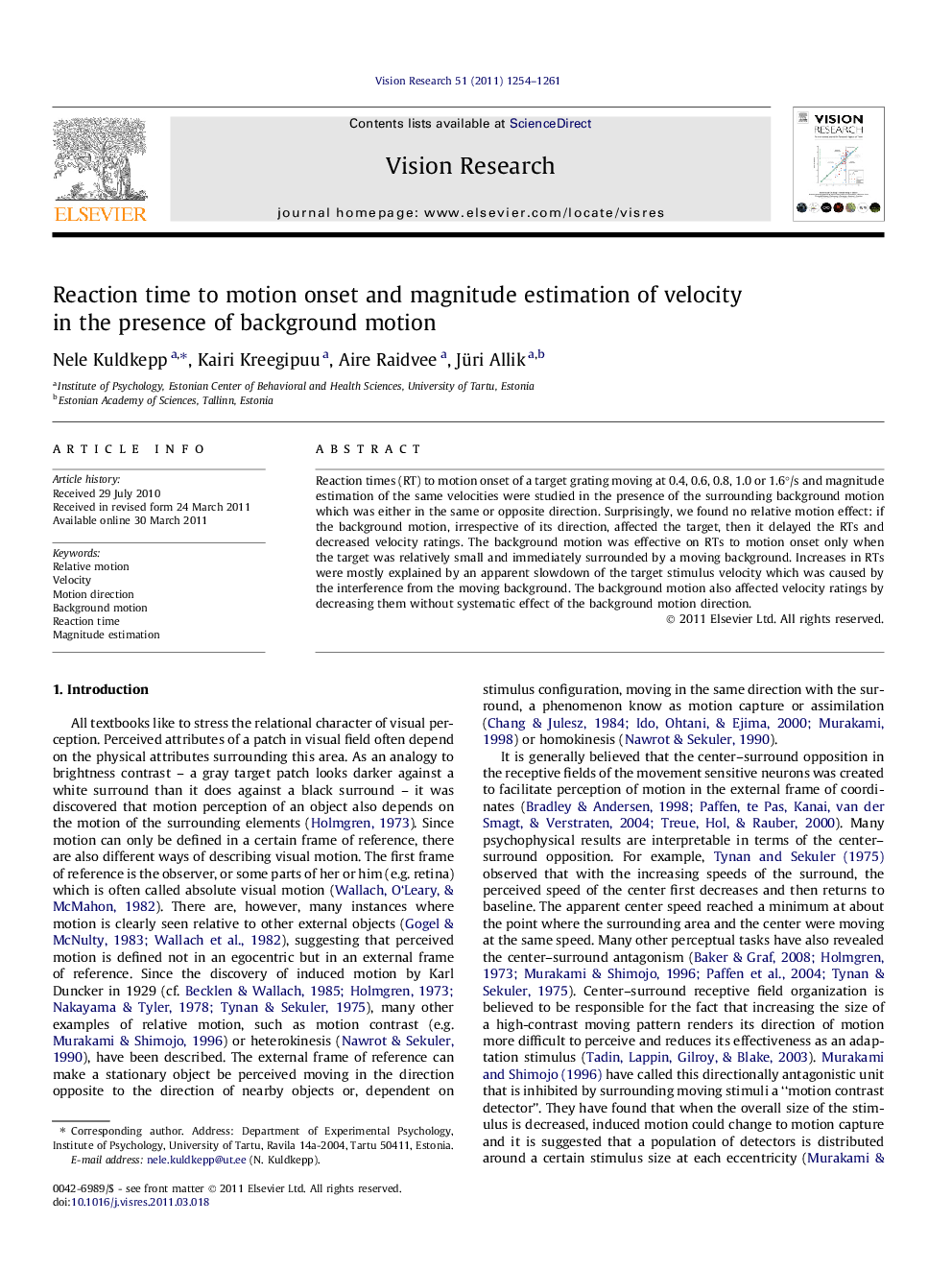| Article ID | Journal | Published Year | Pages | File Type |
|---|---|---|---|---|
| 6203790 | Vision Research | 2011 | 8 Pages |
Reaction times (RT) to motion onset of a target grating moving at 0.4, 0.6, 0.8, 1.0 or 1.6°/s and magnitude estimation of the same velocities were studied in the presence of the surrounding background motion which was either in the same or opposite direction. Surprisingly, we found no relative motion effect: if the background motion, irrespective of its direction, affected the target, then it delayed the RTs and decreased velocity ratings. The background motion was effective on RTs to motion onset only when the target was relatively small and immediately surrounded by a moving background. Increases in RTs were mostly explained by an apparent slowdown of the target stimulus velocity which was caused by the interference from the moving background. The background motion also affected velocity ratings by decreasing them without systematic effect of the background motion direction.
⺠RTs to target motion onset are delayed in the presence of background motion. ⺠Background motion decreases the magnitude estimations of target velocity. ⺠Motion detection time is a monotonically decreasing function of stimulus velocity. ⺠Motion detection time depends on apparent rather than physical velocity of the target.
